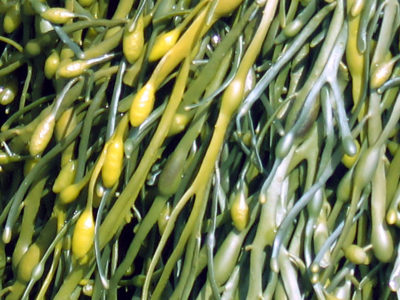It’s no secret that I LOVE seaweed and think that everyone should eat seaweed multiple times per week (that’s why I wrote the post Why Seaweed is Amazing!). Most of us are familiar with the nori that wraps sushi rolls, but list of edible seaweeds definitely doesn’t end there. Other types of seaweed fit for human consumption include:
- Dulse, a salty red seaweed that can be eaten without any soaking or cooking!
- Kombu, a thick seaweed often used as a flavor enhancer in broth and a tenderizer for beans
- Arame, a mild-flavored seaweed high in lignans
- Wakame, a subtly sweet seaweed often used in soups and salads (especially the seaweed salad found in Asian restaurants)
- Laver, a smooth, sheet-like red algae with a very high iodine content (which makes its flavor similar to olives and oysters!), which is used to make nori for sushi
I have dried versions of all of the above in my pantry at all times! Seaweed has been consumed in East Asian cultures for thousands of years, and it helps to fill the nutritional gap that many of us face in the modern world.
Plenty of vegetables have impressive nutritional résumés, but seaweeds really take the cake (er, the salad)! Although each variety of seaweed has a different overall profile of vitamins and minerals, in general, you can expect these foods to be rich in iodine, calcium, magnesium, iron, potassium, phosphorus, manganese, copper, chromium, zinc, selenium, vitamin C, vitamin E, vitamin K1, B vitamins (1,2,3,5, and 6!), and dozens of trace minerals. Seaweed also contains specific components that are responsible for its health benefits.
You can get dried seaweed in many varieties on Amazon!


 Cucumber
Cucumber